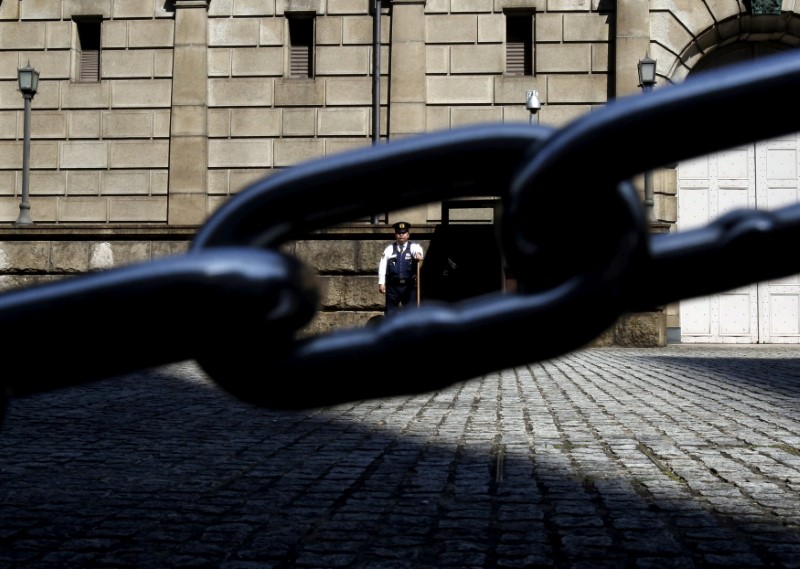 © Reuters. FILE PHOTO: A security officer is seen through a chain link as he stands guard outside the Bank of Japan headquarters in Tokyo
© Reuters. FILE PHOTO: A security officer is seen through a chain link as he stands guard outside the Bank of Japan headquarters in TokyoTOKYO (Reuters) – Japanese households’ inflation expectations improved and pessimism about current economic conditions eased slightly, a quarterly survey from the Bank of Japan showed on Friday.
The percentage of households who expect prices to rise a year from now was 77.4 percent in June, up from 73.9 percent in March to reach the highest level since December 2015.
The percentage of households who expect prices to rise five years from now improved to 82.3 percent in June, the highest level in a year, a BOJ official said.
The pick up in inflation expectations could bolster the BOJ’s argument that upward momentum in prices remains intact despite disappointing data on consumer spending.
An index measuring households’ confidence in current economic conditions improved to minus 9.9 from minus 12.4 in March, the BOJ’s survey of residents’ livelihoods showed on Friday.
However, the index measuring households’ expectations for economic conditions a year from now worsened for the first time in three quarters to minus 16.6 from minus 15.2 in March.
The survey, conducted between May 11 and June 6, is among key data the central bank will scrutinize at its rate review this month to see how well its ultra-loose policy is working.
The central bank is also seen as likely to cut its price growth forecasts at the two-day policy meeting ending on July 31, sources told Reuters.
The BOJ will also offer some analysis of why consumer prices have remained subdued, several BOJ officials have said.
The nationwide core consumer price index, which includes oil products but excludes volatile fresh food costs, rose just 0.7 percent in May from a year earlier, well below half the central bank’s 2 percent target.
Fusion Media or anyone involved with Fusion Media will not accept any liability for loss or damage as a result of reliance on the information including data, quotes, charts and buy/sell signals contained within this website. Please be fully informed regarding the risks and costs associated with trading the financial markets, it is one of the riskiest investment forms possible.
Source: Investing.com




























